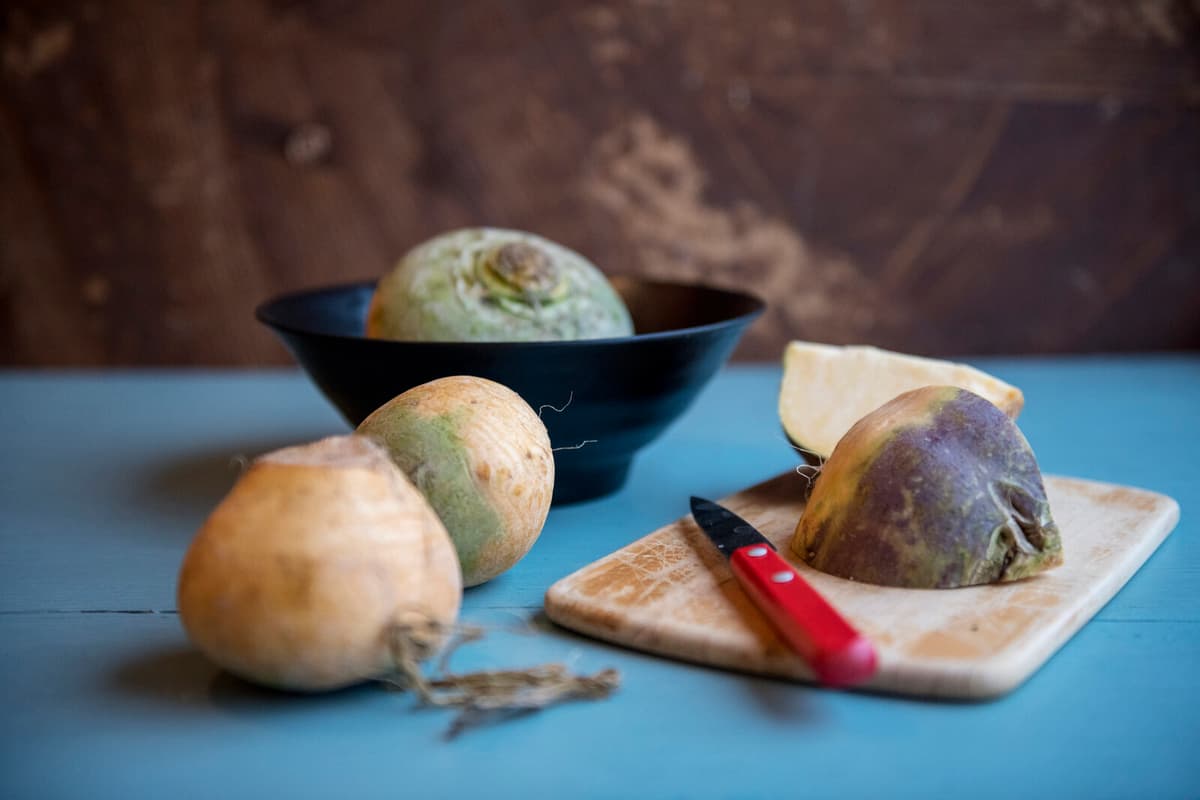According to the Finnish researcher Hannu Ahokas, who has devoted a large part of his life to mapping the swede, it has its roots in 17th-century southern Finland and the Baltic region. Exactly where the swede comes from is a matter of definition, says Martin Ragnar, engineer and one of the founders of the Swede Academy:
It depends on which glasses you look with. Finland was an integrated part of Sweden in the 17th century when the swede was discovered, he says.
Could have become "finlandia"
From there, the swede spread to Västergötland and further to Scotland. The Scots noted that the root vegetable came from Sweden, so it got to be called "swede".
It is possible that it could have been called "finlandia" instead, but it did not become so. Even in Germany, they named it after Sweden, "schwedische rübe", says Martin Ragnar.
He thinks that the swede has a self-evident place in a Swedish cultural canon.
Absolutely! The swede has fed people during several wars and it has spread around the world in a way we do not understand the extent of. I have even found it in a store in New Orleans. It's cool!
Finland has, however, taken the swede to its heart more than Sweden. A Finnish Christmas table without swede casserole is unthinkable. Martin Ragnar agrees that the swede is a bit underestimated here.
But it's coming! In recent years, grilled swede has become increasingly common on Swedish Christmas tables as well.
50 swede varieties
He tells about an occasion when the Swede Academy invited leading Swedish chefs in Stockholm to try swede.
They had no idea that there are about 50 swede varieties with different smells and tastes.
Many have also missed that the swede is called "Nordens apelsin" (the Nordic orange) in Norway because it contains as much vitamin C as an orange.
The question is what Hannu Ahokas, who received the Swede Academy's prize "for his epoch-making research on the origin and cultural history of the swede" in 2017, thinks about the swede now becoming a part of Swedish cultural history?
I think he thinks it's excellent that it gets more attention! This is no battle between nations, says Martin Ragnar.
Vivvi Alström/TT
Swede
TT
Food will be included in a Swedish cultural canon, confirmed committee chairman Lars Trägårdh in June.
Among the public's proposals for dishes that should be included are, in addition to swede, also Flying Jacob, pea soup with punch, isterband and potatoes.
The swede is a hybrid of rutabaga and cabbage. It originated in the mid-17th century.
In Sweden, there are about 50 different varieties of swede, including Klint-Karin, which is a little sweet and tastes like hazelnut, and Farfar, which is crispy, slightly woody and fiber-rich.
In the motivation for the swede to get a place in the Swedish cultural canon, it says: "A cultural crop that has emerged in Sweden and spread around the world. Certainly, one can at first perhaps wrinkle one's brow at an inconspicuous and somewhat neglected vegetable like swede, but the fact is that it has saved many lives in wartime in many European countries."
The committee A cultural canon for Sweden has let two expert groups - one for the arts and one for society - agree on 100 works or phenomena that will be included in the Swedish cultural canon that the Tidö parties have developed.
The list was ready already before the summer, according to Dagens Nyheter.
In TT's summer series, a number of phenomena are highlighted that are not quite as "Swedish" as we think.






